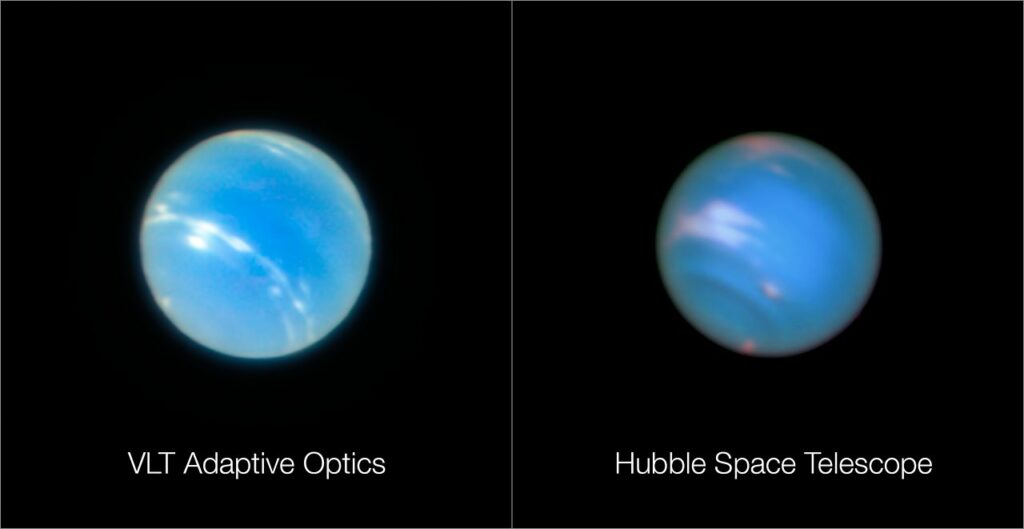For 17 years, an international group of astronomers has been tracking changes in the temperature of Neptune’s atmosphere using ground-based telescopes, including the Very Large Telescope of the European Southern Observatory (VLT ESO). They managed to detect a sudden drop in the global temperature of the planet, followed by a sharp warming in the area of the south pole.
Neptune Temperature Measurements
On Neptune, as on Earth, the seasons change during its orbit around the Sun. However, each season on the eighth planet lasts about 40 earth years — after all, the duration of one Neptunian year is 165 Earth years.

Of course, astronomers are very interested in weather processes that occur in such unusual conditions. But how to measure the temperature of the planet whose orbit passes at a distance of 4.5 billion km from the Sun? For this, astronomers use highly sensitive thermal imagers that register the thermal radiation of celestial bodies. Similar instruments are installed on the most powerful telescopes, like the ESO’s Very Large Telescope.
Global warming on Neptune
In 2005, summer came to the southern hemisphere of Neptune, and astronomers began to track changes in the temperature of the planet after the summer solstice. Over the next 17 years, almost one hundred thermal infrared images of Neptune were obtained, the comparison of which revealed general trends in temperature changes in the stratosphere of the planet over the Southern Hemisphere.

The data showed that, despite the onset of summer in the Southern Hemisphere, over the past two decades, most of the planet has been gradually getting colder. Between 2003 and 2018, the global average temperature of Neptune dropped by 8 °C.
However, then the situation changed sharply. In the period between 2018 and 2020, astronomers unexpectedly registered a sharp warming near the South Pole of Neptune at 11 °C.
The temperature changes on Neptune turned out to be completely unexpected, and astronomers do not yet know what could have caused them. Their cause could be chemical processes in the stratosphere of the planet, random weather changes or even the solar cycle. To find out the cause of temperature fluctuations, new observations will be needed in the coming years. The James Webb Space Observatory, as well as ground-based telescopes of the future, such as the ESO’s Extremely Large Telescope (ELT), will be able to observe similar temperature changes in detail and build new detailed chemical and temperature maps of the atmosphere of the eighth planet from the Sun.
According to https://www.eso.org
Follow us on Twitter to get the most interesting space news in time
https://twitter.com/ust_magazine

